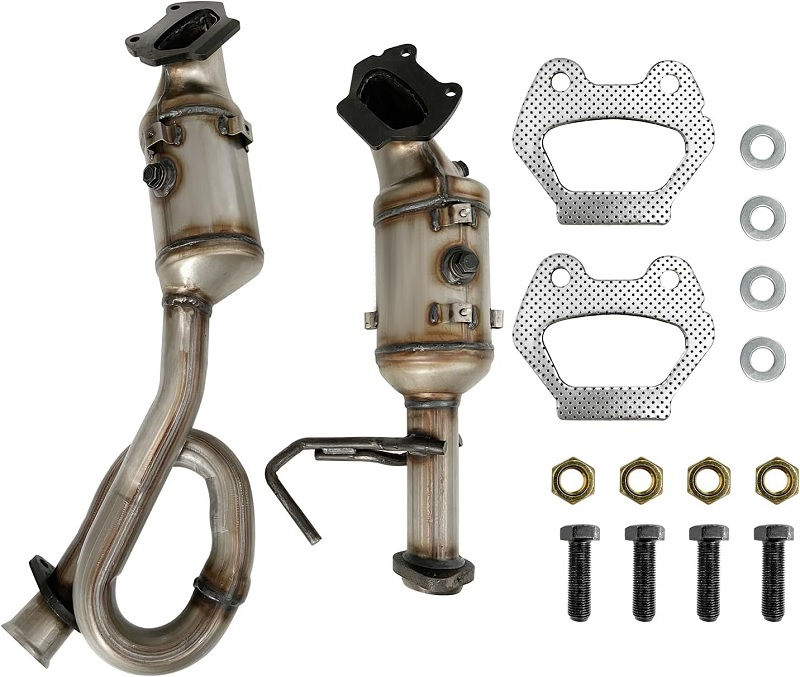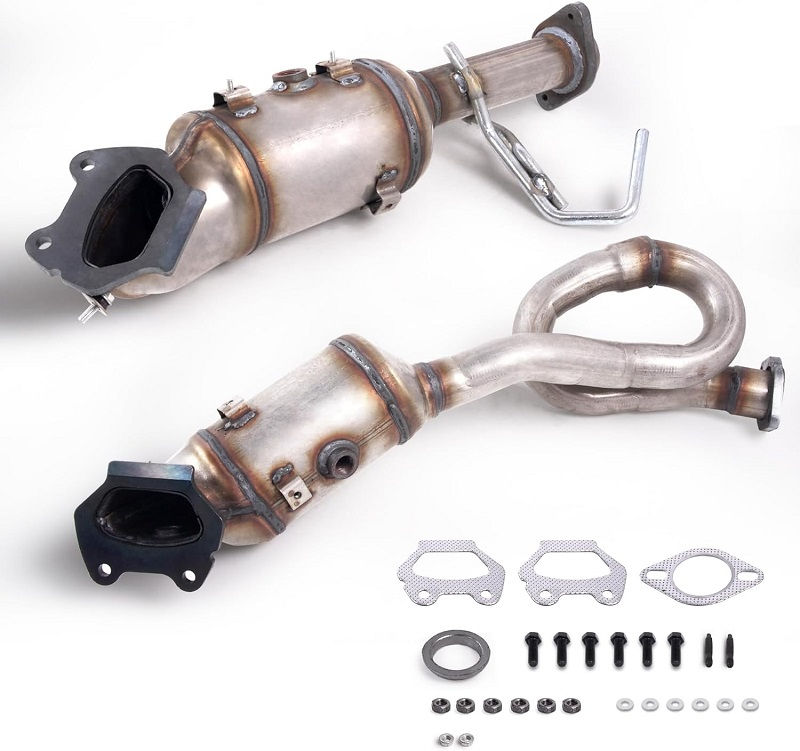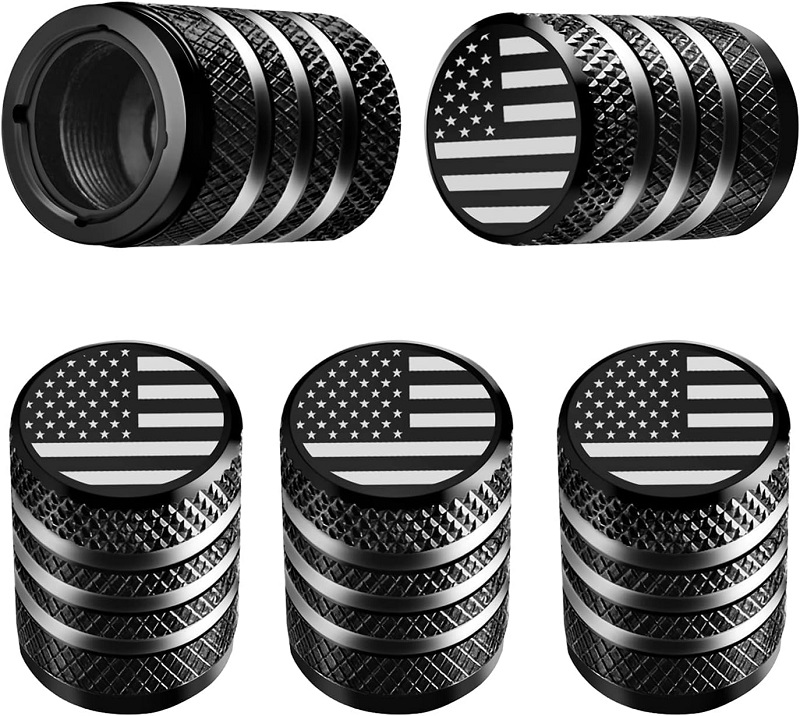This post contains affiliate links. This means I will make a commission at no extra cost to you should you click through and make a purchase [ “As an Amazon Associate, I earn from qualifying purchases.” ]. Read the full disclosure here.
Jeep Wrangler Catalytic Converter GuideMechanic.Com Are you a proud owner of a Jeep Wrangler? Then, it’s crucial to understand the importance of a catalytic converter in your vehicle.
In this comprehensive blog article, we will delve into the world of Jeep Wrangler catalytic converters, exploring their function, types, common issues, and maintenance tips.
Whether you’re a seasoned Jeep enthusiast or a new Wrangler owner, this guide will provide you with the knowledge you need to keep your vehicle running smoothly and efficiently.
In the following sections, we will cover various aspects related to Jeep Wrangler catalytic converters. From understanding their role in reducing emissions to identifying different types available in the market, we’ve got you covered.
Additionally, we’ll address common issues that can arise with catalytic converters and provide you with practical maintenance tips to prolong their lifespan. Let’s dive in and explore the world of Jeep Wrangler catalytic converters!
The Importance of Catalytic Converters

Catalytic converters play a crucial role in reducing harmful emissions from your Jeep Wrangler’s exhaust gases.
They contain precious metals that facilitate chemical reactions, converting harmful pollutants into less harmful substances before they are released into the environment.
By promoting cleaner emissions, catalytic converters contribute to improving air quality and minimizing the impact on the environment.
Reducing Harmful Emissions
One of the primary functions of a catalytic converter is to reduce harmful emissions produced by your Jeep Wrangler’s engine.
It achieves this by facilitating chemical reactions within the converter. As exhaust gases pass through the catalytic converter, the metals inside, such as platinum, palladium, and rhodium, act as catalysts, promoting the conversion of harmful gases into less harmful substances.
For example, a three-way catalytic converter is designed to reduce three main types of harmful emissions: carbon monoxide (CO), nitrogen oxides (NOx), and hydrocarbons (HC).
The converter’s honeycomb structure and the presence of the precious metals enable these reactions to take place effectively, converting CO into carbon dioxide (CO2), NOx into nitrogen (N2), and HC into carbon dioxide (CO2) and water (H2O).
Promoting Environmental Responsibility
By reducing harmful emissions, catalytic converters help to promote environmental responsibility. As stricter emissions standards are implemented worldwide, it becomes essential for vehicle owners to ensure their cars comply with these regulations.
Installing and maintaining a properly functioning catalytic converter is not only a legal requirement in many areas but also a way to contribute to a cleaner and healthier environment for ourselves and future generations.
Moreover, using a functioning catalytic converter can also have a positive impact on your Jeep Wrangler’s fuel efficiency. When your engine operates within optimal conditions, fuel consumption is more efficient, resulting in better mileage and reduced fuel costs. Therefore, taking care of your catalytic converter not only benefits the environment but also your wallet.
Types of Catalytic Converters for Jeep Wranglers

Jeep Wrangler catalytic converters come in various types, each with its own advantages and considerations.
Understanding the different types available will allow you to make an informed decision based on your specific needs and preferences.
Two-Way Catalytic Converters
Two-way catalytic converters, also known as oxidation catalytic converters, are designed to reduce two types of harmful emissions: carbon monoxide (CO) and hydrocarbons (HC).
These converters use a combination of platinum and palladium catalysts to facilitate the conversion of CO and HC into less harmful substances, such as carbon dioxide (CO2) and water (H2O).
This type of catalytic converter is generally less expensive than three-way converters, making them a popular choice for many Jeep Wrangler owners.
However, they are not capable of reducing nitrogen oxides (NOx) emissions, which may be a consideration depending on the emissions standards in your area.
Three-Way Catalytic Converters
Three-way catalytic converters are designed to reduce three main types of harmful emissions: carbon monoxide (CO), nitrogen oxides (NOx), and hydrocarbons (HC).
They use a combination of platinum, palladium, and rhodium catalysts to facilitate the conversion of these pollutants into less harmful substances.
A three-way catalytic converter consists of two main components: the reduction catalyst and the oxidation catalyst.
The reduction catalyst helps convert nitrogen oxides into nitrogen (N2), while the oxidation catalyst facilitates the conversion of carbon monoxide and hydrocarbons into carbon dioxide (CO2) and water (H2O).
This type of catalytic converter is the most common in modern vehicles, including Jeep Wranglers, due to its ability to effectively reduce multiple types of emissions.
High-Flow Catalytic Converters
High-flow catalytic converters are designed to optimize the flow of exhaust gases, allowing for increased horsepower and improved engine performance.
These converters are often used by Jeep Wrangler owners who have made modifications to their vehicles and are looking to enhance their off-road capabilities or overall power.
High-flow catalytic converters achieve their increased flow capacity by using larger diameters and less restrictive internal structures.
While these converters can contribute to improved performance, it’s important to note that they may not meet emissions standards in some areas.
Therefore, it’s essential to research and ensure compliance with local regulations before considering a high-flow catalytic converter for your Jeep Wrangler.
Signs of a Failing Catalytic Converter
Recognizing the signs of a failing catalytic converter is crucial to prevent further damage and ensure optimal performance of your Jeep Wrangler.
By being aware of these signs, you can address any issues promptly and avoid costly repairs or potential damage to other components of your vehicle.
Reduced Engine Performance
A failing catalytic converter can have a noticeable impact on your Jeep Wrangler’s engine performance. If you experience a loss of power or difficulty accelerating, it could indicate a problem with the converter.
The reduction in engine performance occurs because a clogged or damaged catalytic converter restricts the flow of exhaust gases, leading to reduced efficiency and power output from the engine.
If you notice a significant decrease in performance, it’s essential to have your catalytic converter inspected by a qualified mechanic to determine the cause and take appropriate measures to rectify the issue.
Increased Exhaust Emissions
One of the primary functions of a catalytic converter is to reduce harmful emissions. Therefore, a failing converter may result in increased levels of pollutants being emitted from your Jeep Wrangler’s exhaust. If you notice dark, thick smoke or a strong sulfur-like smell, it could indicate a problem with the converter.
Additionally, a failing catalytic converter may trigger the “check engine” light on your vehicle’s dashboard. Modern Jeep Wranglers are equipped with onboard diagnostic systems that monitor various components, including the catalytic converter. If the system detects an issue, it will illuminate the “check engine” light to alert you to a potential problem.
Unusual Noises
A failing catalytic converter may produce unusual noises that can indicate a problem. If you hear rattling or metallic sounds coming from the underside of your Jeep Wrangler, it could be a sign that the internal components of the converter have become loose or damaged. These noises typically occur due to a deteriorating substrate or a broken catalyst material within the converter.
It’s important not to ignore these unusual noises, as they can indicate a serious problem with your catalytic converter that requires immediate attention.
Continuing to drive with a damaged converter can lead to further damage to your vehicle’s exhaust system or other components.
Failed Emissions Test
If your Jeep Wrangler fails an emissions test during a routine inspection or registration renewal, it may be due to a failing catalytic converter.
Emissions tests measure the levels of pollutants being released from your vehicle’s exhaust and compare them to the acceptable limits set by local regulations.
If your catalytic converter is not functioning correctly, it may not be able to effectively reduce the emissions to within the acceptable limits.
As a result, your vehicle will fail the emissions test. It’s important to address this issue promptly to ensure compliance with regulations and avoid potential fines or penalties.
Common Issues with Catalytic Converters

Despite their importance, catalytic converters can experience various issues over time. Understanding these common problems will help you take appropriate measures to prevent or address them, ensuring the longevity and optimal performance of your Jeep Wrangler’s catalytic converter.
Catalytic Converter Clogging
Catalytic converter clogging is a common issue that can occur due to a buildup of carbon deposits or other contaminants within the converter.
Over time, these deposits can restrict the flow of exhaust gases, leading to reduced engine performance and increased emissions.
Several factors can contribute to catalytic converter clogging, including the use of low-quality fuel, engine misfires, or oil or coolant leaks. It’s important to address these underlying issues promptly to prevent further damage to the converter.
Overheating
Catalytic converters can overheat if they are exposed to excessively high temperatures for prolonged periods. Overheating can occur due to engine problems, such as a misfiring cylinder or a malfunctioning oxygen sensor, or as a result of other issues, such as a restricted exhaust system or a faulty thermostat.
Physical Damage
Physical damage to the catalytic converter can occur due to various reasons, such as road debris, impact from objects underneath the vehicle, or corrosion.
A damaged converter may develop cracks or holes, causing exhaust leaks and affecting its ability to effectively convert harmful emissions.
It’s important to regularly inspect the underside of your Jeep Wrangler for any signs of physical damage to the catalytic converter.
If you notice any dents, cracks, or other visible damage, it’s best to have it inspected and replaced if necessary to maintain proper functionality.
Oxygen Sensor Malfunction
The oxygen sensor plays a crucial role in the proper functioning of the catalytic converter. It measures the oxygen levels in the exhaust gases and provides feedback to the vehicle’s engine control unit (ECU), which adjusts the air-fuel mixture for optimal combustion and converter performance.
If the oxygen sensor malfunctions or fails, it can disrupt the feedback loop and lead to an improper air-fuel mixture. This can cause the catalytic converter to operate outside its optimal parameters, leading to reduced efficiency and potential damage.
Regularly inspecting and maintaining the oxygen sensor is essential to ensure the proper functioning of the catalytic converter. If you notice any signs of a malfunctioning oxygen sensor, such as poor engine performance or a “check engine” light, it’s advisable to have it diagnosed and replaced if necessary.
Contamination
Contamination of the catalytic converter can occur if substances such as oil, coolant, or unburned fuel enter the exhaust system. These contaminants can coat the catalyst surface and inhibit its ability to facilitate the necessary chemical reactions.
Contamination can result from various issues, including a malfunctioning engine, leaky gaskets, or internal engine problems. Regular maintenance, including fixing any underlying issues promptly, is crucial to prevent contamination and prolong the lifespan of the catalytic converter.
Excessive Sulfur Exposure
Exposure to excessive sulfur can be detrimental to the catalytic converter’s performance. Sulfur is present in gasoline and diesel fuel, and if the fuel contains high levels of sulfur, it can lead to the formation of sulfur dioxide (SO2) during the combustion process. This can contaminate and degrade the catalyst materials within the converter.
Fortunately, modern fuels, particularly in regions with stricter emissions regulations, have significantly reduced sulfur content. However, if you suspect that you may be using fuel with high sulfur levels, it’s advisable to switch to a lower sulfur fuel to protect the catalytic converter.
Maintaining Your Jeep Wrangler’s Catalytic Converter
Regular maintenance is key to prolonging the life of your Jeep Wrangler’s catalytic converter. By following these practical tips, you can ensure the longevity and optimal performance of this crucial component.
Use High-Quality Fuel
Using high-quality fuel is essential to prevent the buildup of contaminants and minimize the risk of clogging or damage to the catalytic converter. Opt for fuels that meet or exceed the recommended octane rating for your Jeep Wrangler.
Additionally, consider using fuel additives that are specifically designed to clean the fuel system and mitigate the risk of carbon deposits. These additives can help keep the catalytic converter and other engine components clean, promoting efficient operation.
Regular Inspections
Regularly inspecting your Jeep Wrangler’s catalytic converter can help identify any potential issues early on. Look for signs of physical damage, such as dents, cracks, or corrosion. Additionally, check for leaks or unusual noises that may indicate a problem with the converter.
It’s also important to inspect the oxygen sensor and ensure it is functioning correctly. If you notice any symptoms of a malfunctioning oxygen sensor, such as poor engine performance or increased fuel consumption, have it inspected and replaced if necessary.
Avoid Excessive Idling
Excessive idling can contribute to the buildup of carbon deposits within the catalytic converter. When you leave your Jeep Wrangler running for extended periods without driving, the converter may not reach its optimal operating temperature, leading to inefficient conversion of emissions.
Whenever possible, avoid excessive idling and turn off the engine if you anticipate not moving for an extended period. This will help maintain the catalytic converter’s efficiency and reduce the risk of clogging or damage.
Address Engine Issues Promptly
Engine issues, such as misfires or coolant or oil leaks, can have a detrimental effect on the catalytic converter. These problems can lead to contamination, overheating, or physical damage to the converter.
If you notice any unusual engine symptoms, such as rough idle, decreased power, or fluid leaks, have your vehicle inspected by a qualified mechanic. Addressing engine issues promptly will help protect the catalytic converter and prevent further damage or costly repairs.
Frequently Asked Questions (FAQs)
Q: How long does a catalytic converter typically last?
A: The lifespan of a catalytic converter can vary depending on various factors, such as driving conditions, maintenance practices, and the quality of the converter.
On average, a catalytic converter can last between 70,000 to 100,000 miles. However, proper maintenance and addressing any issues promptly can help prolong its lifespan.
Q: Can I drive my Jeep Wrangler with a failing catalytic converter?
A: It is not recommended to drive your Jeep Wrangler with a failing catalytic converter. A damaged or clogged converter can result in reduced engine performance, increased emissions, and potential damage to other components of your vehicle.
It’s best to have the issue addressed by a qualified mechanic to prevent further damage and ensure optimal performance.
Q: Can I clean a clogged catalytic converter?
A: While there are products on the market that claim to clean catalytic converters, they are generally not effective for significant clogs.
If you suspect a clogged converter, it’s best to have it inspected by a professional. They can determine the extent of the clog and recommend the appropriate course of action, which may include replacement if necessary.
Q: How can I prevent catalytic converter theft?
A: Catalytic converter theft has become a prevalent issue in recent years. To help prevent theft, consider parking your Jeep Wrangler in well-lit areas or garages, install a security system or alarm, and use anti-theft devices designed specifically for catalytic converters, such as protective shields or marking systems.
Additionally, engraving your vehicle identification number (VIN) on the converter can help deter thieves and aid in identification if it is stolen.
Q: Can I sell my old catalytic converter?
A: In some cases, you may be able to sell your old catalytic converter for recycling purposes. However, it’s important to research and comply with local regulations regarding the sale and recycling of catalytic converters.
Some regions have specific requirements and restrictions to prevent the illegal trade of stolen converters. Ensure that any sale or recycling of your old converter is conducted in accordance with the applicable laws and regulations.
Jeep Wrangler catalytic converters are essential components that play a vital role in reducing emissions and ensuring compliance with environmental regulations.
By understanding their function, types, common issues, and maintenance tips, you can keep your Wrangler running smoothly and efficiently.
Remember to prioritize regular inspections, proper maintenance, and compliance with legal requirements to maximize the lifespan of your catalytic converter. With this comprehensive guide, you’re now equipped with the knowledge to make informed decisions and maintain your Jeep Wrangler’s catalytic converter effectively.
- Dura Lube Catalytic Converter Cleaner: Does It Work? - April 15, 2025
- Does Catalytic Converter Cleaner Work? - April 13, 2025
- Cataclean Catalytic Converter Cleaner - April 13, 2025
